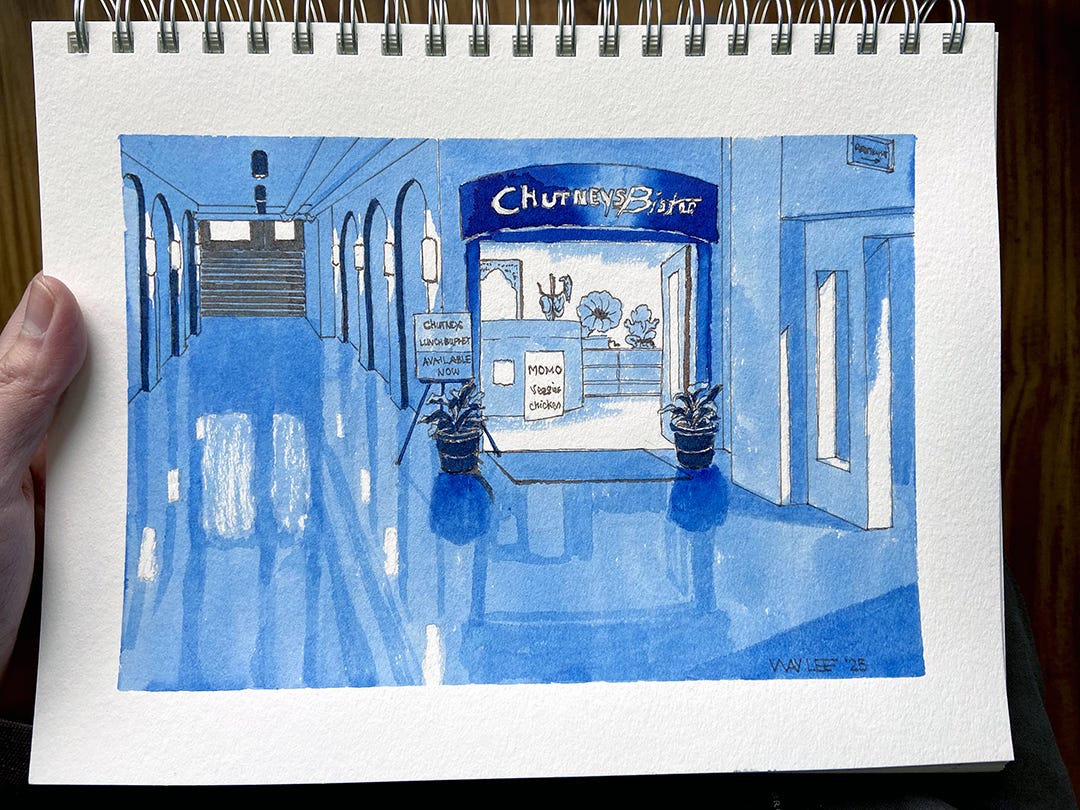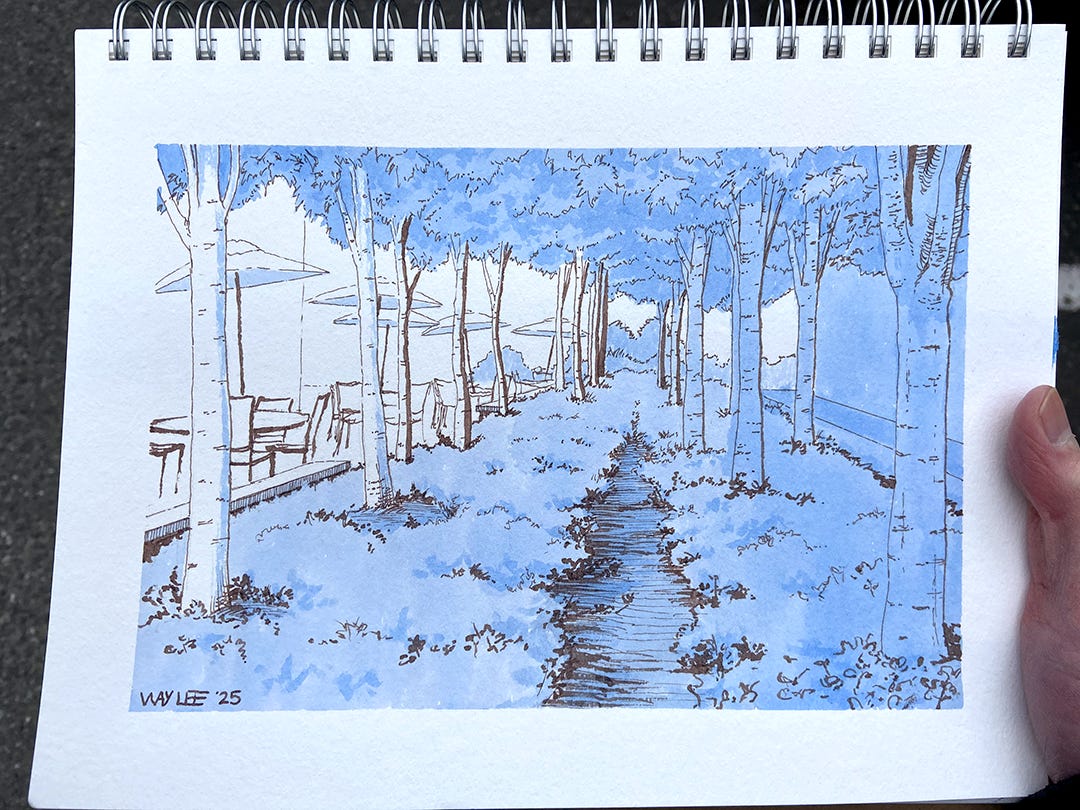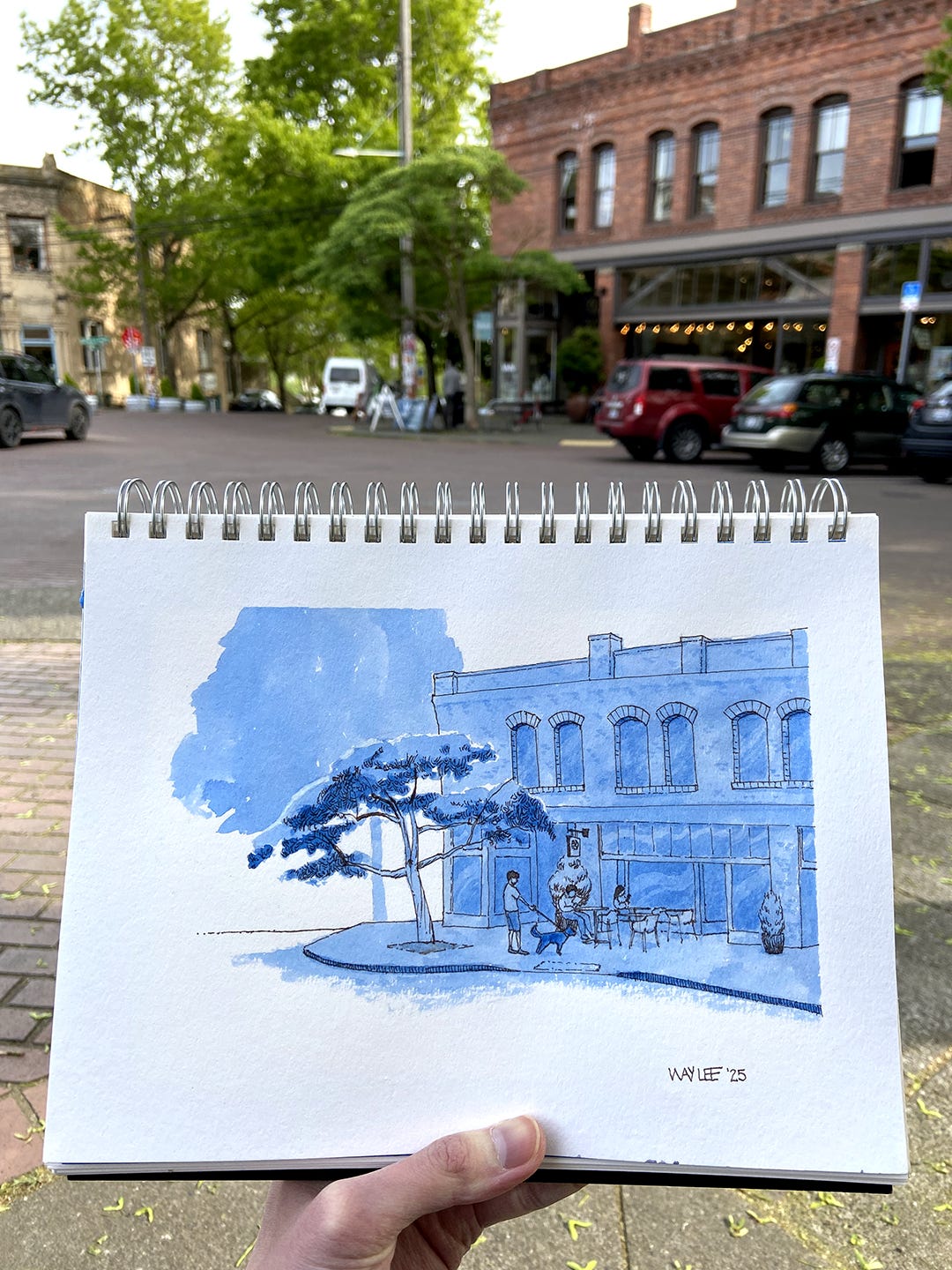This ad-free and plain ol’ free publication runs on the positive vibes coming from readers like you. Subscribe to send positive vibes.
That is a stretch of a joke title referencing the The Fast & The Furious sequel, 2 Fast 2 Furious, because this is the sequel to my first post in this series, “In My Blue Period”. Hey now, there’s an internal rhyme on the “Period” with “Furious”! Thanks for going with it. ;)
I’m about to get into some nitty gritty technical issues with art materials, so if you just want to see the pretty blue artwork, skip ahead!
I mentioned last time that I think I want to put on a small exhibition (like in a cafe, low key) of this series once I’ve done enough to present a cohesive collection. A concern that’s come up is I realized that the fact that I’m using water-soluble ink means that the ink is sensitive to fading in sunlight (the ink is “fugitive”).
One issue with that is that I’ve seen people online say that that means it’s not fit for selling. On the other hand, I’ve also seen a printmaker say that it’s totally fine as long as you’re not misrepresenting things. This latter position seems sensible to me. There’s plenty of artwork in museums that will fade with exposure to light, even artificial light. And museum glass is UV blocking to protect the art, so it seems like the point is rather that people just need to be aware of an artwork’s sensitivity and to protect it accordingly. I’d be curious for your thoughts on this, if you have any!
Another, related concern is that even if my art weren’t for sale (though, I think I would have them available to purchase in the event of putting on a show), I’d still want the pieces not to damaged or to fade during their time on show. Cafes often have large windows and potentially even direct sun exposure on parts of their walls.
So, I plan to replace the panes of whatever frames I use for the art with UV glass. This should protect it while it’s on display, as well as for whomever buys it with the frame.1 If they reframe it, they’ll need to take heed.
So, I got a small piece of UV glass from my local framers to test the inks I’m using in these artworks for lightfastness, with and without the protection of the UV glass. I’ve set up two pieces of paper with Iroshizuku blue ink (water-soluble), De Atramentis document brown (waterproof), and Pentel permanent pigment black (waterproof) markings on each. The papers are taped to a window that gets a lot of sunlight, one with the UV glass between it and the sun, and the other without.
I’ll share back the results much later this year after enough time has passed to see differences emerge—it should take months.
Anyway, today I’m sharing another three scenes from around Seattle this spring, continuing with my (brown and) blue ink approach. I’m really enjoying these!
There’s an Indian bistro tucked away under the lonely halls of Wallingford Center in Seattle. The historic building used to house many small shops, but gradually hosts more vacancies in the wake of the pandemic. The lonely atmosphere of the bold banner in the quiet basement caught my attention, along with the waxy floor reflecting the lights.
One of my favorite things about Seattle is that there’s so much greenery integrated throughout a very urban city. (We are the Emerald City, after all.) This drawing I did at U Village, an “outdoor mall”. As I wandered the walkways looking for a composition, the architecture-y views around the shopping center weren’t grabbing me. Then I saw this little path through a small stand of trees, with the parasols peeking through the gaps. I went lighter on the ink wash this time to let my line work shine.
I did this drawing the Friday before Mother’s Day. It was a warm and sunny spring afternoon in Old Town Ballard, and plenty of people were enjoying the air, stopping by the tea shop pictured here (Miro Tea) and the cafe next door.
Two mothers who each were visiting their sons from out of town separately stopped by to chat with me about tools and methods while I was working on this because they were urban sketchers, themselves!
The good news is this suggests that if I live long enough to retire, I will not be one of those old men who have no friends.
For artists who exhibit and sell art frequently, it seems ideal not to sell the frame with the art, so that you don’t have to keep spending the time getting new frames every time you have new art to show. You can increase your prices to compensate for the frames and the time, but time’s precious.









That polished floor positivly glows!
These are gorgeous!